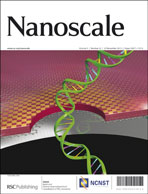Nanostructured TiO2 surfaces promote polarized activation of microglia, but not astrocytes, toward a proinflammatory profile
Abstract
Activation of glial cells, including astrocytes and microglia, has been implicated in the inflammatory responses underlying brain injury and neurodegenerative diseases including Alzheimer's and Parkinson's diseases. The classic activation state (M1) is characterized by high capacity to present antigens, high production of nitric oxide (NO) and reactive oxygen species (ROS) and proinflammatory cytokines. Classically activated cells act as potent effectors that drive the inflammatory response and may mediate detrimental effects on neural cells. The second phenotype (M2) is an alternative, apparently beneficial, activation state, more related to a fine tuning of inflammation, scavenging of debris, promotion of angiogenesis, tissue remodeling and repair. Specific environmental chemical signals are able to induce these different polarization states. We provide here evidence that nanostructured substrates are able, exclusively in virtue of their physical properties, to push microglia toward the proinflammatory activation phenotype, with an efficacy which reflects the graded nanoscale rugosity. The acquisition of a proinflammatory phenotype appears specific for microglia and not astrocytes, indicating that these two cell types, although sharing common innate immune responses, respond differently to external physical stimuli.


 Please wait while we load your content...
Please wait while we load your content...